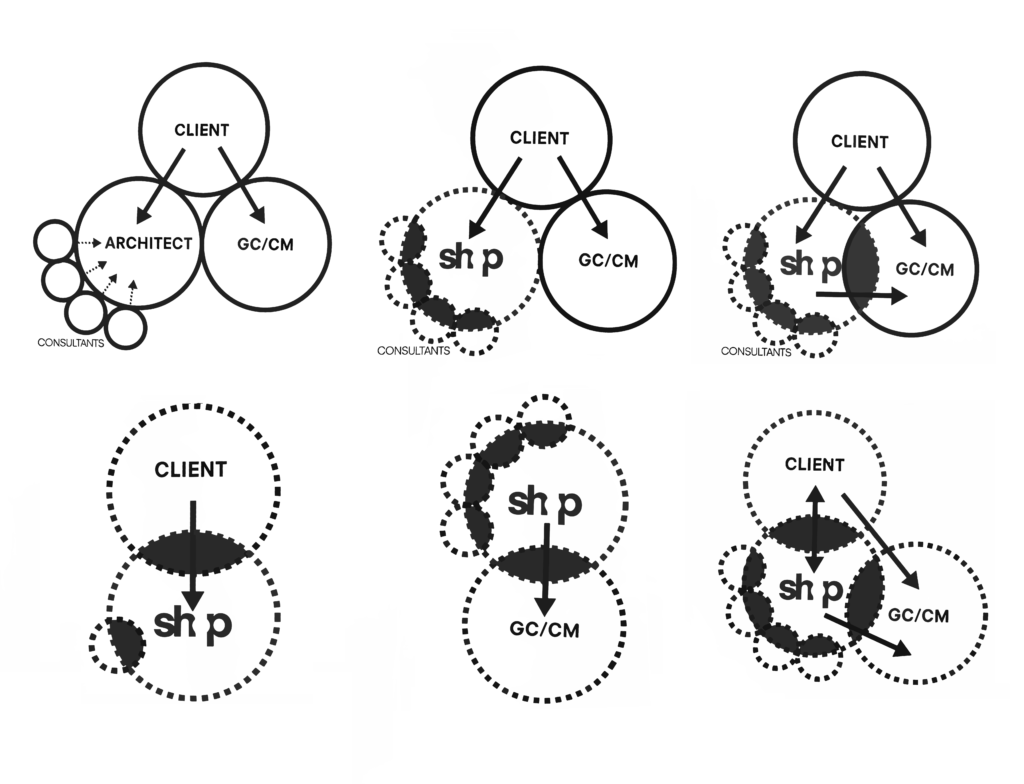Reading Time: < 7 min
From Conception to Realization
SHoP Architects’ Processes in Detail

The volume “SHoP Works” by Stefano Converso, part of the The IT Revolution series—an Italian collection of books on information technology and architecture founded by Antonino Saggio and published in 2008—stands as a beacon in the landscape of contemporary architecture. Through an insightful analysis of the award-winning firm SHoP Architects, Converso reveals a unique and transformative perspective that challenges and redefines traditional architectural paradigms.
What sets SHoP apart is its studio-centric philosophy and a meticulous focus on the creative process. Converso skillfully articulates the complex dynamics within the firm, which was founded by five partners with diverse and complementary backgrounds. Holden, with expertise in art history; C. Sharples in political science; W. Sharples in marketing; and Pasquarelli in economics, each bring a distinct set of skills that collectively shape the firm’s innovative and multifaceted approach to design.
The book emphasizes the crucial role of SHoP’s decision-making processes, underscoring how the firm consistently aligns its projects with its core values, often turning down commissions that do not meet their standards. Converso guides the reader through SHoP’s methodology, highlighting the designers’ active involvement at every stage—from initial conception to final implementation. This hands-on approach is what makes their practice both iterative and experimental, continuously refining and improving upon each project.
A particularly enlightening chapter delves into SHoP’s operational structure, illustrating how the firm streamlines interactions among clients, consultants, and contractors. This streamlined communication model has enabled SHoP to strike a delicate balance between efficiency and quality—an equilibrium that is notoriously difficult to achieve in the competitive architectural market.
SHoP further distinguishes itself with the concepts of “Versioning” and “Customization.” The firm’s operational flexibility, drawing from diverse disciplines such as fashion, finance, and culinary arts, is a key strategy for extracting valuable insights that inform their architectural projects.
The narrative continues by exploring SHoP’s collaboration with IT research and their innovative use of software. Unlike traditional firms, SHoP embraces a flexible and adaptive approach to software selection, tailoring their tools to meet the specific needs of each project rather than adhering to a one-size-fits-all methodology.
Converso also highlights SHoP’s pivotal transition to parametric technology, exemplified by landmark projects like the Fashion Institute of Technology (FIT) in New York. The firm’s adoption of parametric software, such as GenerativeComponents and Digital Project, marks a significant evolution in their design process, offering unprecedented precision and flexibility during the production phases.
The book reaches its crescendo with an in-depth analysis of key projects, such as the pedestrian bridge on Rector Street, showcasing SHoP’s expertise in navigating both technological and design challenges through the integration of parametric software. The firm’s growth and accumulated experience emerge as vital factors in their ability to manage and execute complex and innovative projects.
SHoP Works is a concise yet richly detailed volume that chronicles SHoP Architects’ remarkable journey in contemporary architecture. Converso presents a clear and inspiring narrative, distilling the complexity of SHoP’s practice into an engaging account that captures the essence of the firm’s innovative processes and methodologies.

From my perspective, the content of this book is both highly insightful and enriching. It offers an illuminating view into the often-overlooked dynamics within architectural practice, particularly the interactions between various stakeholders and the role of software—not just as a tool for adaptation, but as a powerful ally in driving progress and innovation.
